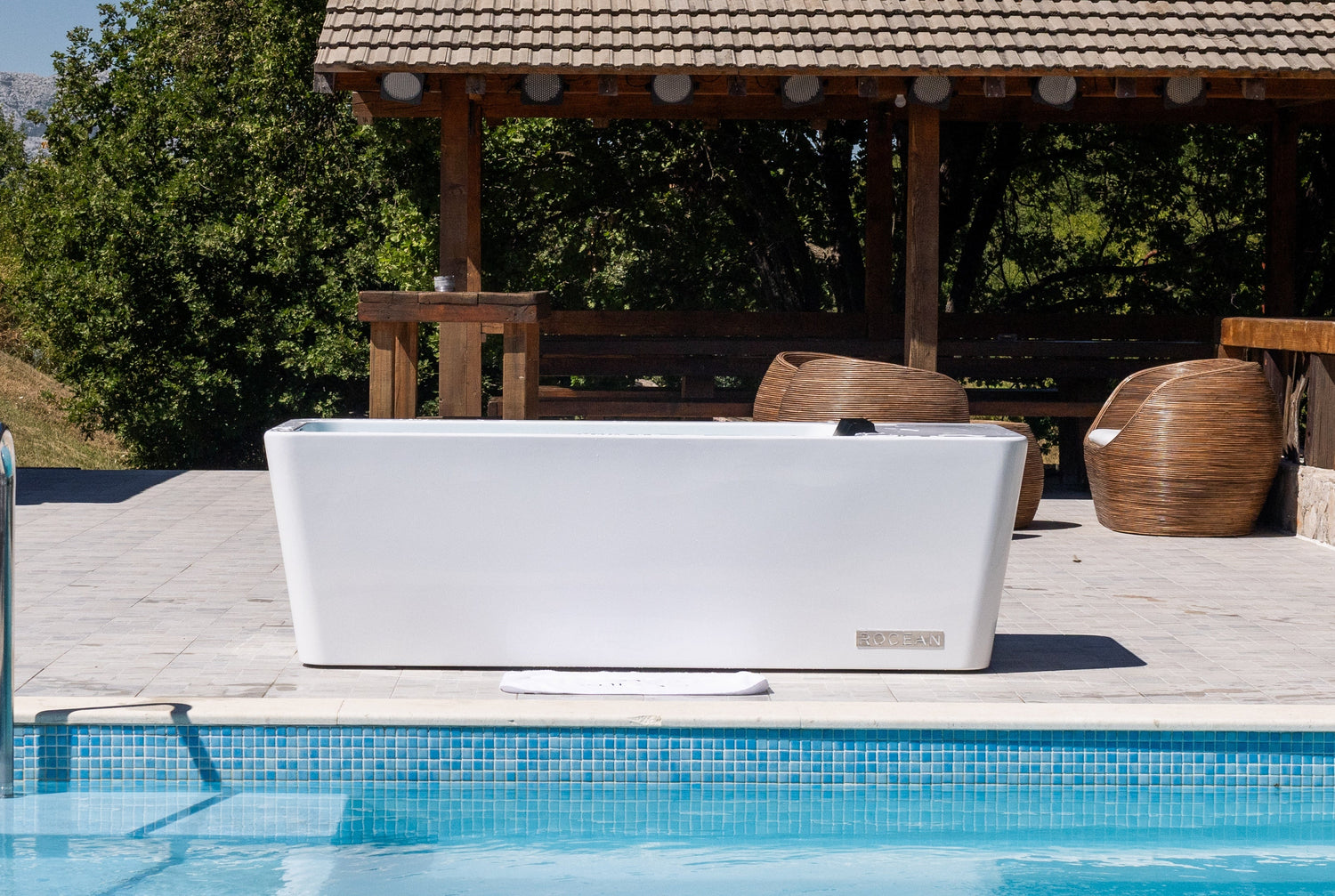Cold baths, an ancient practice that's been revived, offer numerous benefits for physical and mental health. Despite this, many are still hesitant to try them, often out of fear that the practice is reserved for athletes or because of apprehension about cold temperatures. However, ice baths can benefit everyone!
At Rocean , we make it easy to get started with cold baths by providing you with specific advice on the ideal temperature and optimal duration to maximize the benefits of this practice. Quickly discover how to incorporate these tips into your daily routine to improve your health and well-being.
How to Take a Cold Bath
Best practices for cold baths, or ice baths, depend on four main elements: motivation , time , temperature , and frequency . We'll examine each aspect in detail and explore best practices to get the most out of your cold therapy experience.
The ideal time to take a cold bath depends on your motivation. Before you begin your cold bath journey, it's crucial to determine why you want to do it. Everyone can benefit from them, whether it's to improve mood, boost overall health, or simply cool down. Once you've identified your reason, you're all set! Here are some common uses for cold baths to help you decide:
To do:
- Complement the cold bath with gentle active recovery exercises, such as yoga and stretching, to speed up your recovery.
- Enter the ice bath slowly to allow your body to gradually adjust to the cold temperature.
- Monitor your body and pay attention to how you feel during the ice bath. If you start to feel numb or excessively cold, get out of the bath immediately.
- Try to dive at the same time every day to establish a routine.
- Consult a professional if you have any health problems or concerns before starting cold baths.
- Make sure you are well hydrated before and after the ice bath to help your body cope with the cold and recover.
- Have warm clothes and a blanket ready after your cold bath to help your body return to its normal temperature.
Don'ts:
- If you experience extreme pain or discomfort, exit the ice bath immediately.
- Avoid direct contact of ice cubes with your skin. If you use cold baths with ice cubes, make sure the ice is evenly distributed throughout the water to avoid freezing burns. You won't have this problem if you use a cold bath like the Rocean.
- Avoid consuming alcohol before or after an ice bath, as it can interfere with your body's ability to regulate temperature.
- Don't assume that ice baths are a perfect recovery solution for everyone. If you experience discomfort or are unsure, consult a doctor or trainer.
- Avoid taking a dip just before bed. A cold bath can have a stimulating effect that increases mental and physical alertness, which can disrupt your sleep.
- Don't warm up too quickly. Instead, let your body warm up gradually instead of warming up immediately.
What is the Right Temperature for a Cold Bath?
This is a question we get asked a lot. The right temperature for a cold bath can vary depending on experience, individual preferences, and therapeutic goals. It's essential to find a temperature that's comfortable but still provides the desired therapeutic effects.
- Use a thermometer to get the correct temperature or use a temperature-controlled tub from Rocean.
- Gradually increase the temperature.
Don'ts:
- Don't let the temperature be painful in any way. Measure the temperature and work toward a comfortable temperature to avoid discomfort.
- If you change the temperature drastically from one day to the next, you may have trouble adjusting. Go slowly at first!
How Long Should a Cold Bath Last?
The ideal duration depends on your experience, personal comfort, and goals. It's essential to start gradually and increase the duration carefully to avoid discomfort or unwanted effects. Timing plays a crucial role in maximizing the benefits of your cold bath: stay too long and you risk overexposure, while not staying long enough could limit the beneficial effects.
To Do:
- Start with short sessions to allow your body to gradually adapt to cold water.
- Gradually increase the duration as you get used to the cold bath.
- If you experience excessive discomfort or pain, exit the ice bath immediately. The duration should not be a source of discomfort.
Don'ts:
- Avoid making your cold bath too long. A longer bath will not help you recover faster.
- Prolonged cold bathing can lead to overexposure and adverse effects on your body.
How often should I take a cold bath?
How often you can take a cold bath depends on several factors, including your personal tolerance for cold, your health goals, and your overall fitness level. It's essential to adjust the frequency of your cold baths based on your comfort, your wellness goals, and your ability to incorporate them safely and effectively into your routine.
To do:
- Adjust the frequency of ice baths based on your recovery and how you feel. If you feel too tired or sore, space out the baths.
- Start with a moderate frequency to allow your body to get used to it.
- Use cold baths after intense workouts.
Don'ts:
- Don't ignore the signs of overexertion; if you experience excessive fatigue, persistent pain, or general discomfort, reduce the frequency of your cold baths.
- Increase the frequency of ice baths gradually to avoid thermal shock and excessive stress.
- Do not take ice baths if you are sick or injured; wait until you are fully recovered before resuming cold baths.
Revolutionize Your Well-Being with Rocean
Cold baths offer exceptional benefits for both physical and mental health, provided they are practiced correctly. By following the guidelines on temperature, duration, and frequency, you will maximize the benefits for your well-being. For a practical and effective solution, discover Rocean Cold Baths . Easily integrate cold therapy into your routine and transform every bath into a revitalizing experience.




